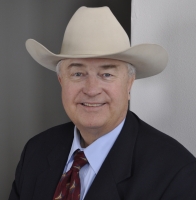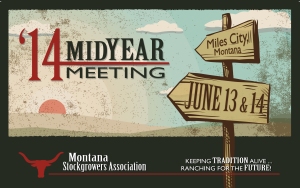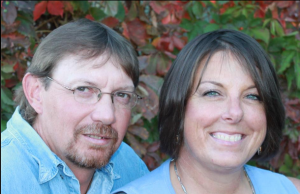
Wanda Pinnow with husband, Craig.
Wanda Pinnow of Baker, Montana is currently serving as the Montana CattleWomen Association’s president and has spent her life raising cattle and sheep on her family’s ranch. Like all businesses, running the ranch hasn’t always been easy, but the work created a life that Wanda and her family are passionate about and are excited to pass that joy on to the next generation. Read more about Wanda in the follow Q&A:
How long has your family been involved in ranching?
My grandfather homesteaded the farm that I grew up on in 1913. My parents had cattle, grain crops, forage and a garden that would feed us for the year. I learned early that we all had a purpose on the farm. Dad worked part time in the oilfield to help pay the bills. Mom milked three cows to feed our 20 bum lambs, (summer project). At an early age, I was outside helping my parents work the farm. We all learned early how to ride the square baler so we could make sure the bales fell correctly. My dad’s idea of Sunday family fun was hauling 600 square bales. My husband, Craig, and I were married in 1980, after two years of living in town, his grandfather (maternal side) asked us to move onto his place. We became cattle owners! In 1988, we moved to the farm (where we live now) that my husband grew up on. We purchased Bracket Butte Ranch two years later. Our greatest joy was making our last payment for the ranch.
What was your favorite part about growing up on the ranch?
My favorite part of growing up on the farm was all ranch seasons: winter was feeding calves, cows, and of course, snowmobiling. Spring was the birth of all of the babies. We couldn’t wait to see what the milk cows would have, for they would be our pets. Branding was time for all of our neighbors to get together. Horseback riding to move cattle, pulling rye out of the wheat field, and just play time on our horses. Summer was a really busy time, fixing fence, swathing, baling then right into combining and seeding, there was never a dull time on the farm and my Parents made us a part of all of it. They taught us well, so we would know what to do when they were not there.
Tell us about your ranch today.
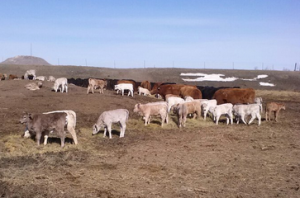 On our ranch today, we have a cow-calf pairs that are Black Angus cross mommas and we use Charolais bulls. We also run Ramboulet cross ewes with Hampshire bucks. It is just Craig and I out working on a daily basis, but our son wants to come back someday when the ranch can support two families.
On our ranch today, we have a cow-calf pairs that are Black Angus cross mommas and we use Charolais bulls. We also run Ramboulet cross ewes with Hampshire bucks. It is just Craig and I out working on a daily basis, but our son wants to come back someday when the ranch can support two families.
What have been some of the trials you’ve had to overcome?
In 1993, we bought some replacement heifers and one of the heifers was a carrier of BVD. We were told that they had had all of their pre-breeding shots. We bought 50 head and 30 of the 50 lost or aborted their calves. It also affected us the following next two years. Our weights were down and we had a lot of sick calves. The sheep were also affected the following year. This is a very bad disease. Our marriage of 13 years almost did not survive this trial.
What is one thing you wish more people knew about life on the ranch?
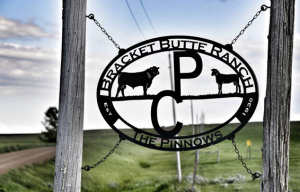 One thing I wished people knew about ranch life is that the livestock and the care of land are very important to us. We do not take being stewards of the land very lightly. God put us here to be care takers and to flourish and live off of the land.
One thing I wished people knew about ranch life is that the livestock and the care of land are very important to us. We do not take being stewards of the land very lightly. God put us here to be care takers and to flourish and live off of the land.
What does it mean to you to be able to work with your family every day?
To be able to work with my family is an honor. Our grandchildren come over and I get such joy teaching them how to be caretakers of the land and animals, just as my parents taught me, and I taught my children.
How would describe “building a legacy” on the ranch?
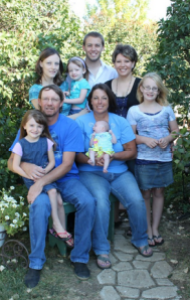 Our son and daughters know how we do things on the ranch. They have come to understand that you do take care of the land to make it a renewable resource every year. You need to take care of your livestock properly by feeding minerals, giving vaccinations yearly, and making sure that they have proper nutrition.
Our son and daughters know how we do things on the ranch. They have come to understand that you do take care of the land to make it a renewable resource every year. You need to take care of your livestock properly by feeding minerals, giving vaccinations yearly, and making sure that they have proper nutrition.
Do you have any advice for future Montana rancher generations about running a successful beef cattle business?
Ranchers can’t be big spenders. You will need to have an outside income to help support your household. Look in to the Farm Service Agency and see what kind of loans they have for beginners.
What is your favorite part about being the Montana CattleWomen president? Why did you decide to lead this group of ladies?
Visiting and sharing ideas with the members from around the state. I knew that I wanted to be president after a year of being State Beef Ed Chairman. I was impressed by how many schools and students we were able to teach using the Beef Ed curriculum!
What’s your favorite beef dish?
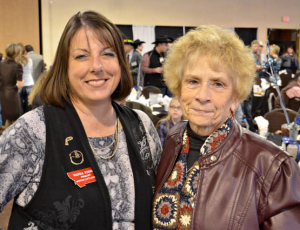 Eye of round roast slow cooked with potatoes, carrots, onions, and a gravy sauce.
Eye of round roast slow cooked with potatoes, carrots, onions, and a gravy sauce.
Is there anything else you can share with us?
The young people today feel that they are too busy to belong to Beef Industry organizations. Our industry would greatly benefit If they only realized that “to have a voice in our industry they need to be involved”.
If you’d like to see more of Wanda’s Montana ranch adventures, you can follow her on Twitter: @Wanda_Pinnow.
 Public comment on expanding the state’s Designated Surveillance Area (DSA) for brucellosis to include a 365-square mile chunk of land between Norris and Three Forks (see map) opened late last week.
Public comment on expanding the state’s Designated Surveillance Area (DSA) for brucellosis to include a 365-square mile chunk of land between Norris and Three Forks (see map) opened late last week.












